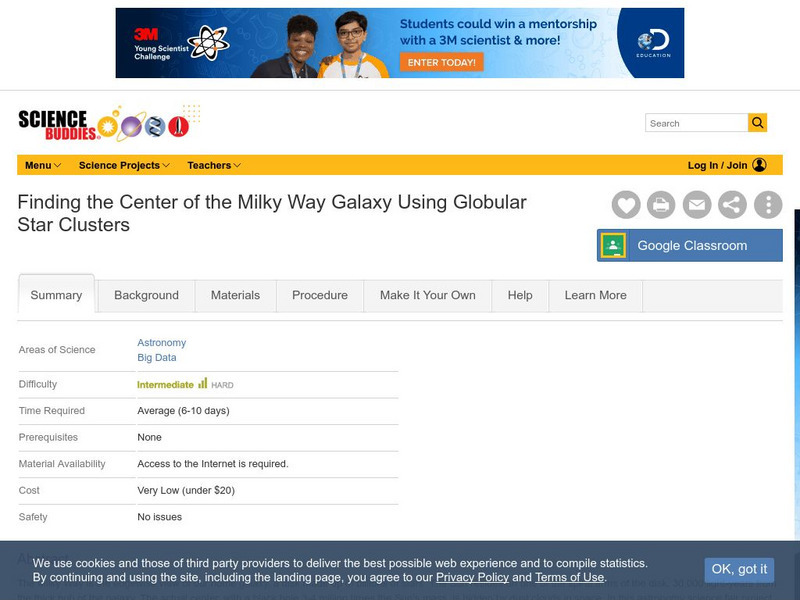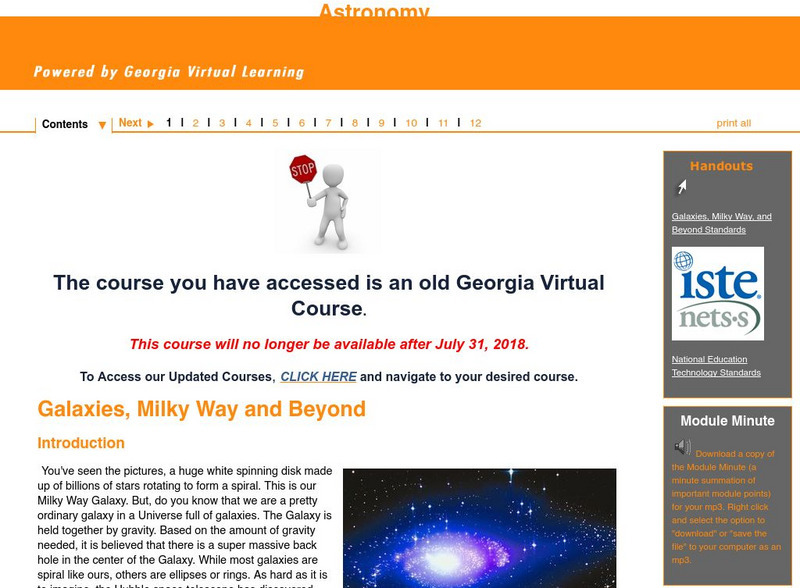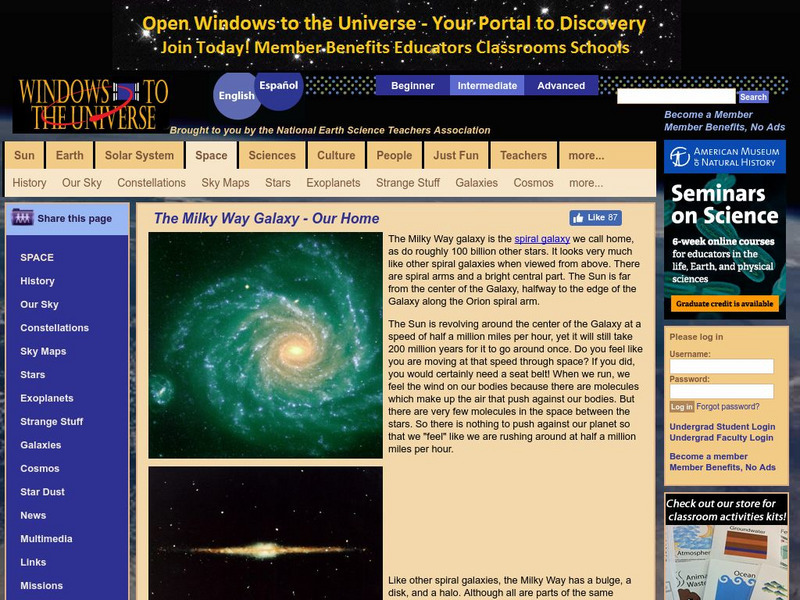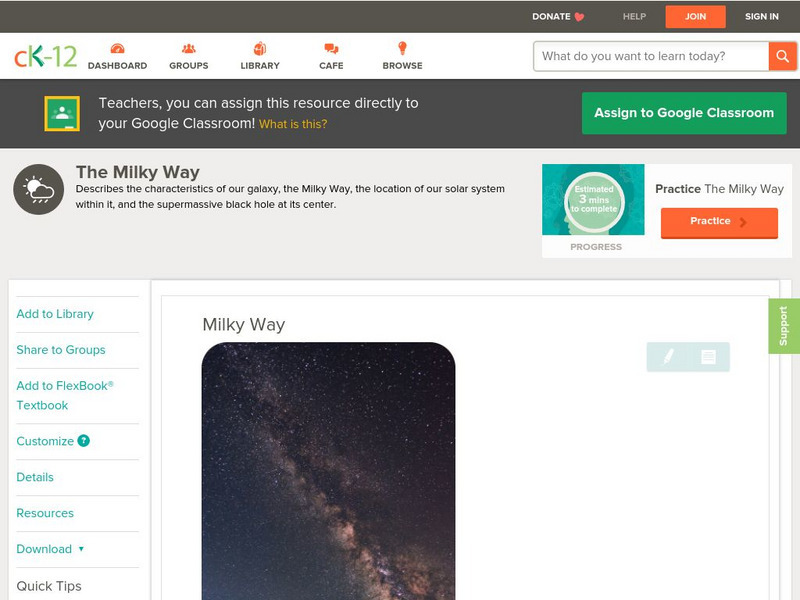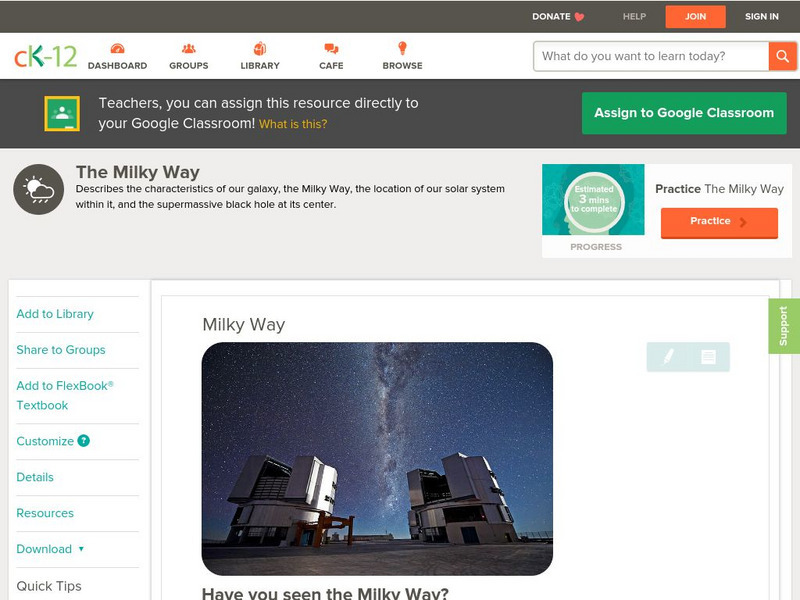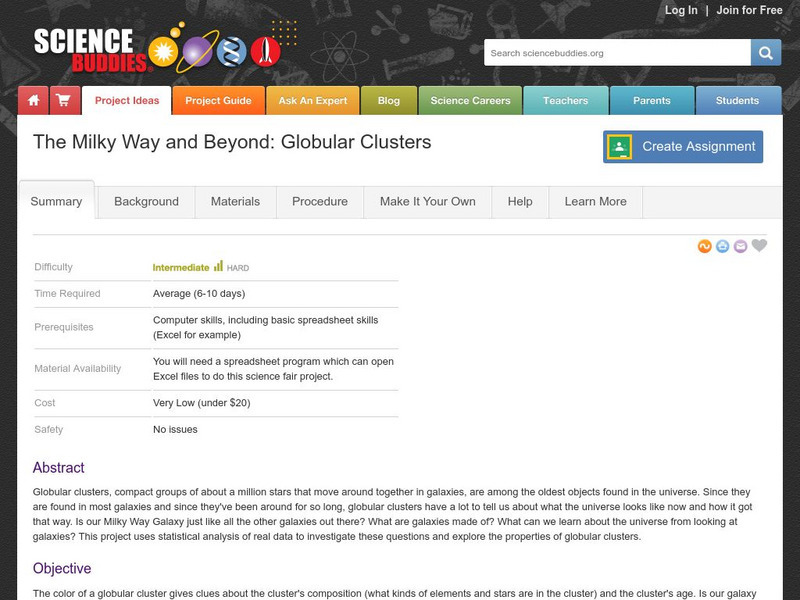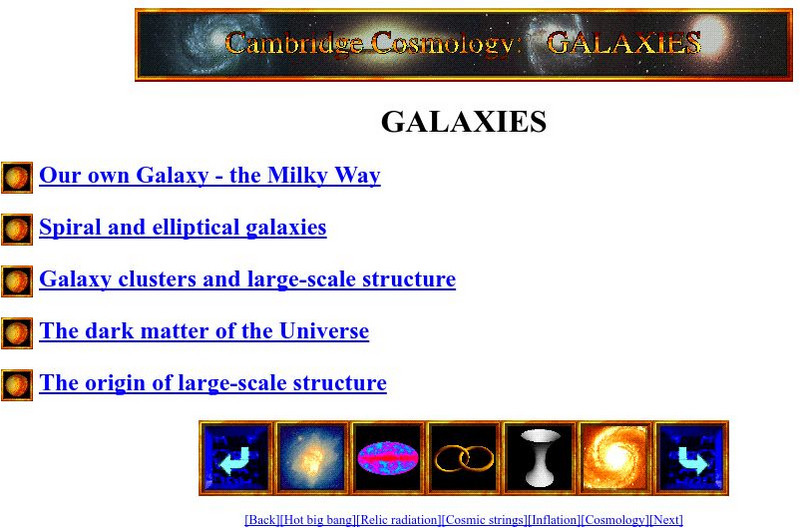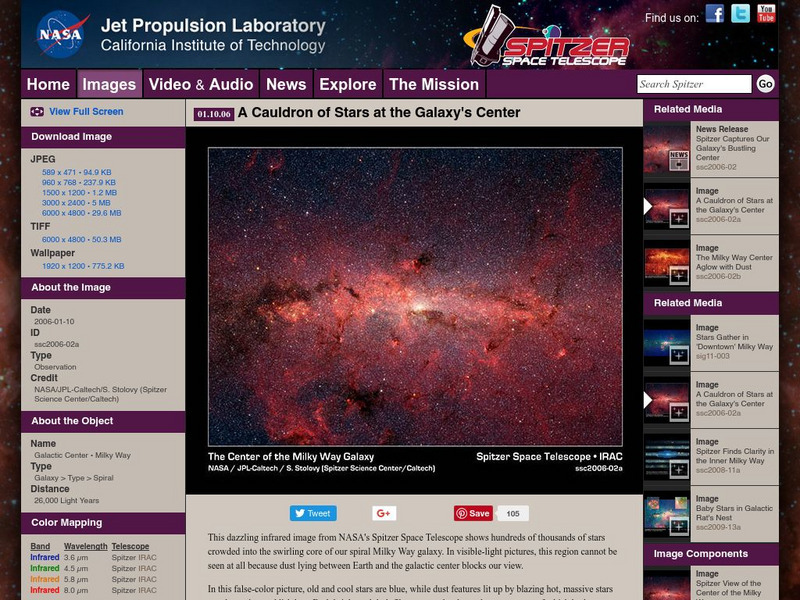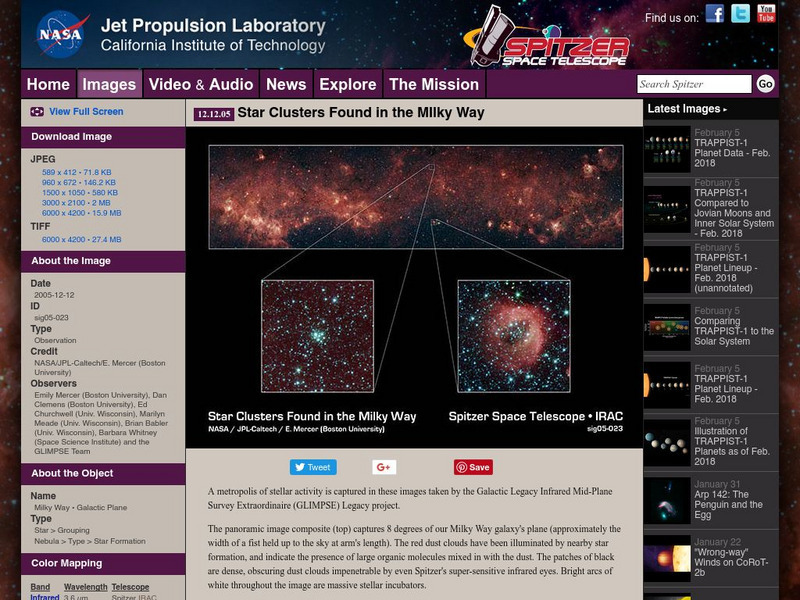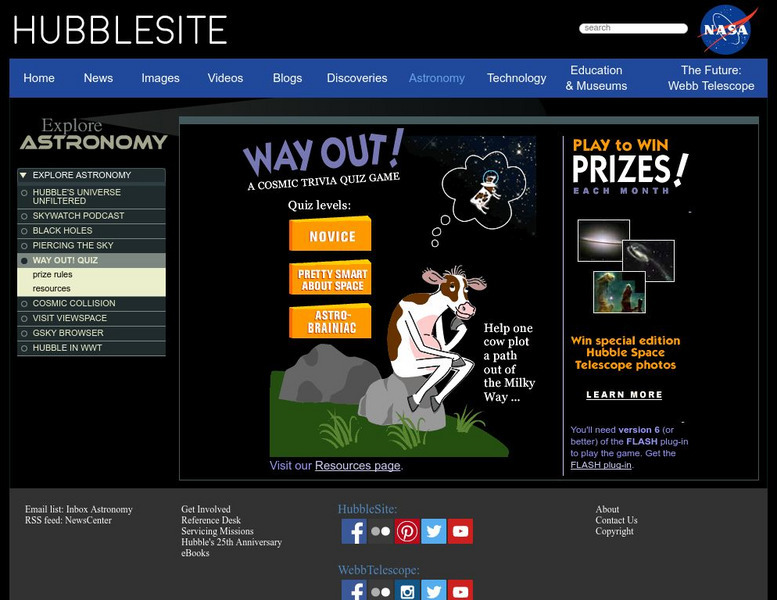Science Buddies
Science Buddies: Find Center of Milky Way Galaxy Using Globular Star Clusters
The Milky Way is the edgewise view of our home galaxy, a disk made up of billions of stars. The Sun resides on one of the spiral arms of the disk, 30,000 light-years from the thick hub of the galaxy. The actual center, with a black hole...
Georgia Department of Education
Ga Virtual Learning: Galaxies, the Milky Way and Beyond
In this interactive tutorial students will explore galaxies. Learn what the Milky Way Galaxy is like, how various galaxies are grouped into clusters and superclusters and why those particular galaxies clump together.
National Earth Science Teachers Association
Windows to the Universe the Milky Way Galaxy
Learn what Milky Way galaxy is made of and what it looks like, as well as how it relates to other known galaxies. Read "Questions and answers about the Milky Way" for further information.
CK-12 Foundation
Ck 12: Earth Science: Milky Way
[Free Registration/Login may be required to access all resource tools.] Identify the shape and size of the Milky Way and where our solar system is located in the Milky Way.
CK-12 Foundation
Ck 12: Earth Science: Milky Way
[Free Registration/Login may be required to access all resource tools.] Identify the shape and size of the Milky Way and where our solar system is located in the Milky Way.
American Museum of Natural History
American Museum of Natural History: Ology: Milky Way Galaxy
How big is a billion? Find out some interesting facts about our galaxy, the Milky Way, and its billion stars.
Science Buddies
Science Buddies: The Milky Way and Beyond: Globular Clusters
Globular clusters, compact groups of about a million stars that move around together in galaxies, are among the oldest objects found in the universe. Since they are found most galaxies and since they've been around for so long, globular...
NASA
Nasa: Milky Way
This Milky Way image is part of a series of photographs taken from the Spitzer Space Telescope. The picture is accompanied by a textual overview of the Milky Way with specific attention given to the details of the picture. Several higher...
Other
University of Cambridge Cosmology: Galaxies
This site from the University of Cambridge allows you to view information on spiral, elliptical, and Milky Way galaxies, as well as galaxy clusters. Provides basic facts about each one.
Mr. Nussbaum
Mr. Nussbaum: Galaxies Reading Comprehension
This learning module includes a nonfiction reading passage about galaxies including the Milky Way followed by a multiple choice self-assessment which gives students immediate feedback.
Cosmos 4 kids
Cosmos4 Kids: Galaxies: Milky Way
Learn the basic facts about the Milky Way. Brief, to the point text make this site most suitable for younger students.
University of Texas at Austin
The University of Texas Mc Donald Observatory: The Milky Way
Learners will work in groups to make up a story and picture that explains how someone living thousands of years ago in their location might have explained the Milky Way.
California Institute of Technology
Spitzer Science Center: Center of the Milky Way
This space telescope image displays the center of the Milky Way Galaxy and its "A Cauldron of Stars." In addition, a detailed textual overview explains various specifics of the picture.
Australian Broadcasting Corporation
Australian Broadcasting Corporation: News in Science: Milky Way Has an Extra Sweeping Arm
From ABC News in Science, this article discusses the shape of the Milky Way Galaxy and the presence of an additional arm attached to the galaxy.
Australian Broadcasting Corporation
Australian Broadcasting Corporation: News in Science: Milky Way Is Many Tentacled Beast
From ABC News in Science, Larry O'Hanlon's article discusses research connected to the size of the Milky Way Galaxy. The article suggests that the galaxy, instead of being a neat spiral, stretches out through a series of arms.
California Institute of Technology
Spitzer Science Center: Milky Way Aglow With Dust
This space telescope image titled "The Milky Way Center Aglow with Dust" features five separate images of the galaxy's center through infrared eyes. In addition, a detailed textual overview explains various specifics of the picture.
California Institute of Technology
Spitzer Science Center: Star Clusters in the Milky Way
Under the heading, "Star Clusters Found in the Milky Way" this site examines specific details of an image displaying various clusters of stars in the Milky Way. The text below the image highlights in detail various features of the picture.
Space Telescope Science Institute
Amazing Space: Galaxies Galore: Games and More
This is a fun and useful site to learn about galaxies. Content includes a building model to create your own Milky Way, games for learning the various types of galaxies, and more fun games.
ClassFlow
Class Flow: The Milky Way
[Free Registration/Login Required] This flipchart provides information about the Milky Way Galaxy and Charles Messier's famous nebulae catalog.
Space Telescope Science Institute
Hubble Site: Way Out!
Can you help a cow plot a path out of the Milky Way? This hilarious space game is for all ages and is offered by HubbleSite. Users may pick their level of expertise and can choose from novice, pretty smart about space, or an astrobrainiac.
NASA
Nasa Space Place: What Is a Galaxy?
This resource explores the different types of galaxies through text and images.
Space Telescope Science Institute
Amazing Space: Galaxies
What is a galaxy? What is the name of our galaxy? Site offers answers to these questions as well as many more.
Space Telescope Science Institute
Nasa: Hubble Space Telescope: Galaxies
At this site from HubbleSite you can learn all about galaxies and black holes. Click on the movie link and discover how old the universe is or study about what happens when two galaxies collide!
